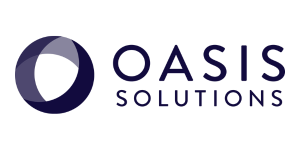Why Business Intelligence and Dashboards are Changing the Face of Reporting
There’s an old adage that says “a picture is worth a thousand words.” Maybe that’s why businesses today are scrapping their traditional reports with endless rows of tabular data and replacing them with business intelligence tools and visual dashboards that are simple to read and even easier to use.
Years ago, Business Intelligence (“BI”) seemed nothing more than a popular buzzword and the exclusive domain of large enterprise companies with even larger IT budgets. But as the technology has matured, today’s BI is more than just a buzzword. It’s an affordable necessity for small and medium-sized businesses that want a competitive edge.
The Right Information at the Right Time
BI is an umbrella term that describes a variety of tools involved in the process of gathering & organizing data into graphical views, charts, and meaningful reports that enable quick and informed decisions. Put simply, BI delivers the right information in the right format to the right person at the right time.
In a traditional reporting environment, a manager or executive might request a report that looks across multiple departments and often multiple software systems. IT then scrambles to gather mounds of data, piece it together, and deliver a report that’s chock full of static data and rarely complemented by graphs and charts.
The resulting “information overload” can delay important business decisions. But with BI, this whole process is quickly becoming a thing of the past.
No “Techie” Required
An important aspect of BI tools is that they enable non-technical users (like employees, managers and executives) to create charts and analytical reports that interpret large volumes of real-time data without the need for a technical degree.
The “real-time” distinction is important because too often, key decision makers are forced to wait while the data they need is extracted and compiled by the IT department in a report that arrives well “after the fact.” The ultimate objective of BI is to empower business software users to access more relevant, timely, and better quality information.
It’s As Easy as Driving a Car
One of the most important elements of BI tools is dashboard-style reporting. One glance at the dashboard in your car tells you everything you need to know about your speed, fuel, oil temperature, and other vital systems to ensure your car runs smoothly. The same thing can be said about a reporting dashboard that provides visual analysis of business activity.
Dashboards aggregate vital information that is scattered across your business and consolidates that information into a single screen providing you with a snapshot to quickly interpret trends and correlations at a glance.
Dashboards can be customized to include only the information that you feel is vital to your role in the company or for the smooth operation of your business. These vital bits of data are sometimes referred to as key performance indicators, or KPIs. Furthermore, dashboards can pull data from just about any source which makes it easy to combine financial information from your accounting system with non-financial metrics maintained in some other database.
It’s Not Just for “The Suits”
One of the nice things about BI is that it works great as both a strategic and operational tool. Strategically, managers and owners can analyze trends, gross profit margins, what products are selling, which sales people are performing, where you stack up against the competition, and other key performance indicators.
Operationally, departmental personnel can streamline their daily procedures. Consider the example of a collections department that goes through a series of tasks, reports, call logs, customer notes, and possibly information in external spreadsheets to determine which customers are overdue. Using BI, all of those tasks and data can be consolidated into a single “Collections Dashboard” that provides a graphical snapshot of overdue customers along with “click of a button” access to underlying detailed account data when needed.
Picture Your Business Using the Power of BI
Business Intelligence has changed the reporting landscape for small and medium-sized businesses.
Contact us and discover how companies like yours are using BI and Dashboard Reporting to get a better picture of business operations and a leg up on the competition.
Or take a peek at some of the business intelligence tools that companies just like you are using today.


